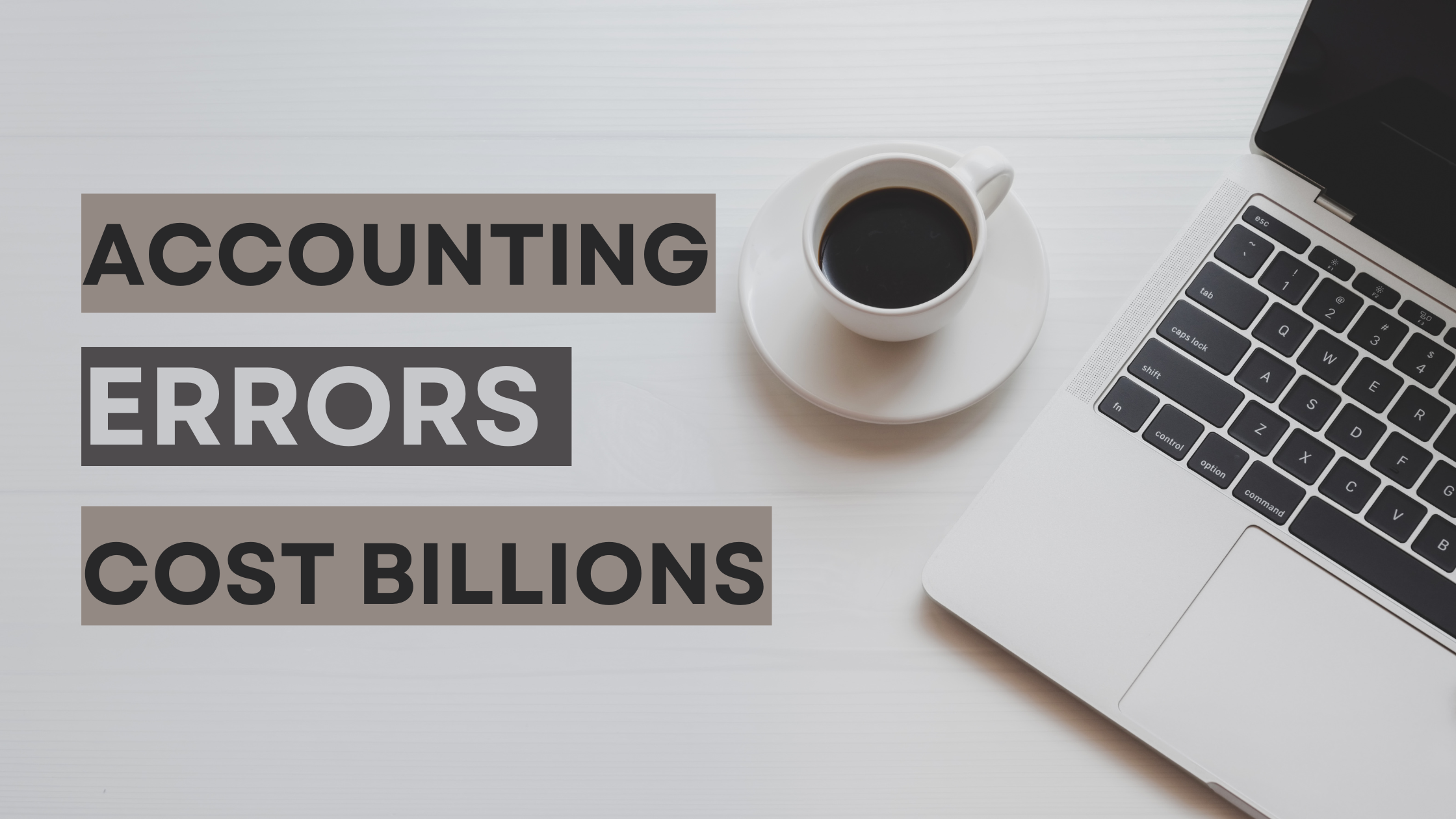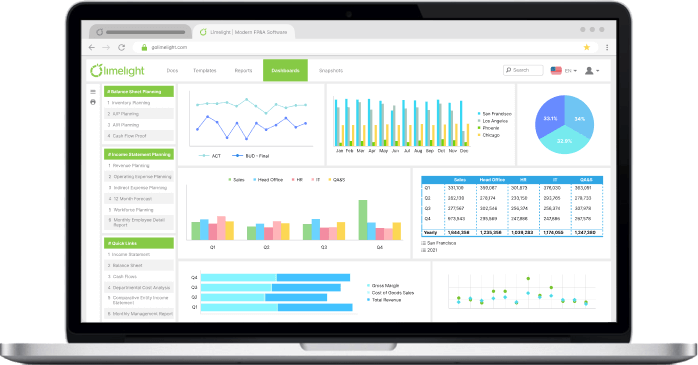The True Cost of Spreadsheet Errors
Spreadsheets have long been the foundation of financial planning and analysis (FP&A) for businesses. They are used for everything from budgeting and forecasting to tax reporting and financial close processes. However, their convenience comes at a price: errors, inefficiencies, and financial losses that cost businesses billions every year.
A 2024 study led by Prof. Pak-Lok Poon found that 94% of business spreadsheets used in decision-making contain errors—some minor, others catastrophic. Companies continue to rely on Excel despite growing evidence that manual spreadsheets are a major liability for accounting and finance teams.
In this blog, we’ll explore the hidden risks of spreadsheet dependency, real-world financial disasters caused by Excel errors, and why modern FP&A solutions like Limelight offer a safer, more efficient alternative.
How Spreadsheet Errors Cost Businesses Billions
The Prevalence of Spreadsheet Mistakes
Spreadsheets are prone to human error, and research confirms that most contain mistakes. Studies have found that:
-
Over 90% of spreadsheets have errors that go unnoticed in financial reporting.
-
50% of spreadsheet models used by mid-sized and large businesses contain material defects that can significantly affect results.
-
Spreadsheet overconfidence is a real risk—financial professionals assume their Excel models are accurate when they often are not.
These errors aren’t just theoretical—they have real financial consequences. Companies across North America have lost millions due to spreadsheet-based miscalculations.
High-Profile Spreadsheet Disasters
1. Citigroup’s Accidental $900M Wire Transfer
In a costly mistake, Citigroup accidentally wired $900 million to creditors instead of making a small interest payment. The error was due to a spreadsheet-based manual input mistake, and some recipients refused to return the money. The legal battles that followed were a direct consequence of Excel’s lack of built-in financial controls.
2. Canada Revenue Agency (CRA) Payment Miscalculations
The CRA suffered a spreadsheet formula error that led to incorrect government relief payments during the COVID-19 pandemic. Some businesses received too much aid, while others received none at all. The miscalculations forced a costly retroactive review and repayment process.
3. J.P. Morgan’s $6 Billion Loss
The infamous “London Whale” trading loss was partially caused by a simple Excel copy-paste error. A risk model used in trading decisions was distorted due to incorrect spreadsheet formulas, contributing to a $6 billion trading loss.
4. Toshiba’s Financial Forecasting Error
Toshiba’s Excel-based financial model contained forecasting errors that led to a misstatement of projected earnings. This required public corrections and led to a loss of investor confidence.
5. UK Government’s COVID-19 Reporting Failure
Although outside North America, this example is a powerful warning. The UK’s public health system missed 16,000 COVID-19 test results because an Excel spreadsheet reached its row limit. This spreadsheet failure delayed critical public health responses, demonstrating the danger of relying on Excel for essential data tracking.
6. Rising Accounting Errors in the U.S.
The number of U.S. companies forced to withdraw financial statements due to accounting errors has surged to a nine-year high, raising concerns about why mistakes are slipping past auditors.
In the first 10 months of 2024, 140 public companies told investors that previous financial statements were unreliable and required restatements with corrected figures, according to Ideagen Audit Analytics. This marks a sharp increase from 122 companies the previous year and is more than double the figure four years ago.
So-called reissuance restatements cover the most severe accounting errors—either because of their size or their importance to investors. The growing trend of financial misstatements highlights the ongoing risks of spreadsheet errors and the need for modernized financial reporting tools.
The Ripple Effect: Financial & Compliance Risks
Beyond the direct financial losses, spreadsheet errors can create:
Regulatory non-compliance: Errors in financial reporting can lead to penalties, restatements, and reputational damage.
Inaccurate financial planning: Mistakes in forecasting or budgeting can result in cash flow issues and misallocated resources.
Audit nightmares: Auditors often struggle to verify spreadsheet-based financials, slowing down reporting cycles and increasing costs.
Gartner Report: The Growing Burden on Accountants
A Gartner survey of 497 financial controllers indicates accounting is becoming increasingly challenging due to new regulations and economic volatility.
Findings include:
- 73% of accountants report increased workloads due to new regulations.
- 82% cite economic volatility as the top reason for rising accounting errors.
- 18% of accountants make financial errors daily, with 59% making several per month.
Gartner warns that error rates could continue to rise unless companies implement automation and AI-driven accounting solutions.
The survey also found that a 75% reduction in financial errors is possible when finance teams embrace modern, user-friendly technology.
Why Companies Are Choosing Limelight Over Spreadsheets
Limelight is a modern FP&A platform designed to eliminate spreadsheet-related risks and inefficiencies.
Unlike Excel, Limelight:
- Integrates directly with ERPs ensuring real-time data accuracy.
- Uses AI-driven insights to detect anomalies and forecast risks, reducing human errors.
- Automates workflows and approvals, saving finance teams hundreds of hours per year.
- Improves compliance by maintaining a full audit trail—something spreadsheets can’t do.
By switching to Limelight, companies can:
- Reduce financial risk by eliminating manual errors.
- Save time with automated consolidations and reporting.
- Make faster, smarter decisions with real-time data and AI-powered insights.
Final Comments: The Time to Move Beyond Excel Is Now
The evidence is clear: spreadsheets are costing businesses billions. Whether through financial miscalculations, regulatory non-compliance, or time wasted on manual processes, Excel is no longer the best budgeting, forecasting and reporting software for growing companies.
Finance leaders who continue to rely on spreadsheets are exposing their organizations to unnecessary risk. The alternative? A modern, Excel-free FP&A platform like Limelight that ensures accuracy, efficiency, and better financial decision-making.
Want to see Limelight in action? Schedule a demo today



.png?width=381&height=235&name=linkedinreal%20(27).png)


